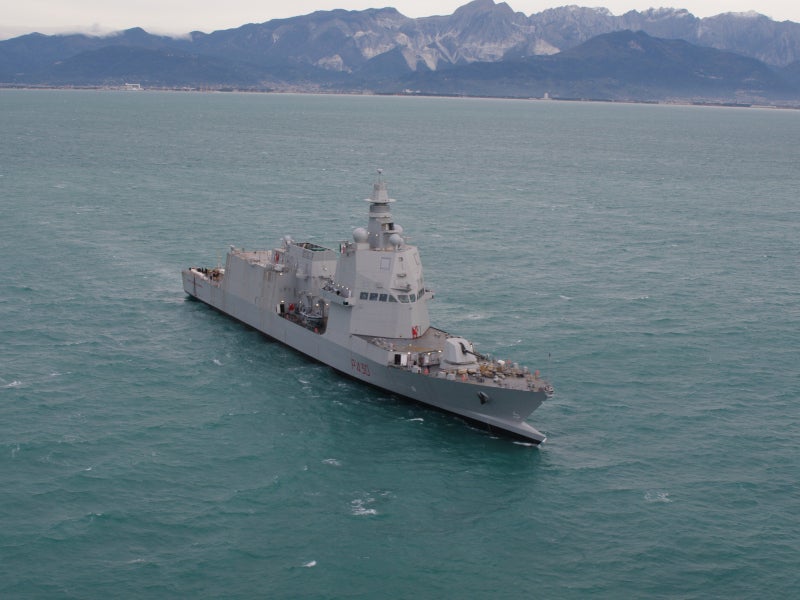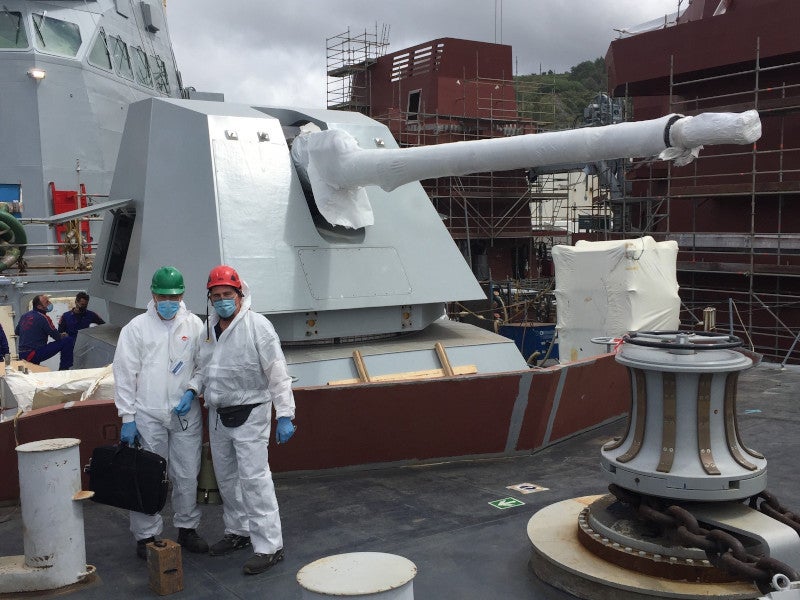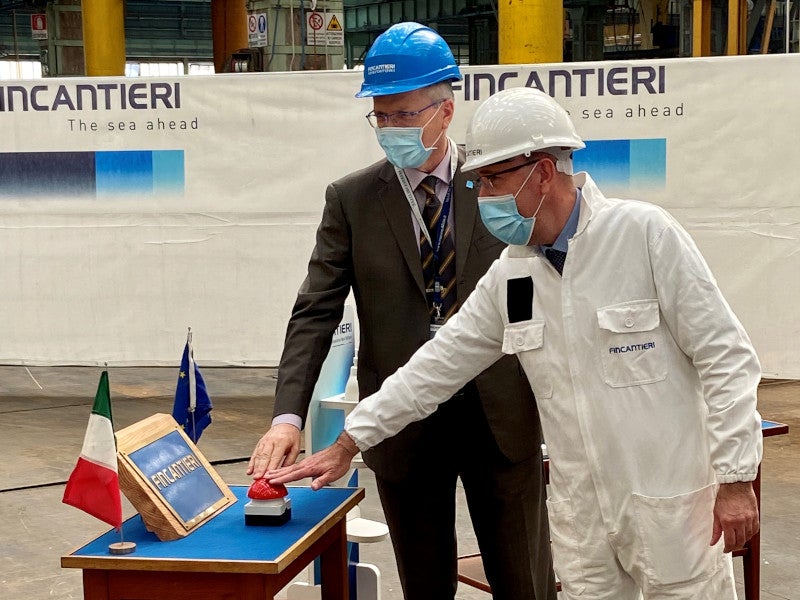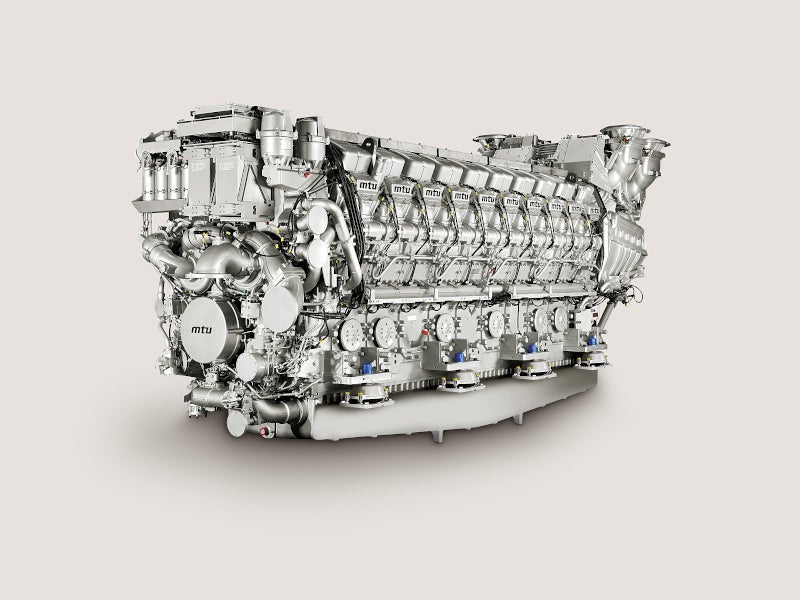Italian Navy plans to induct seven Pattugliatori Polivalenti d’Altura (PPA) class multi-role offshore patrol vessels by 2026. Fincantieri, an Italian shipbuilding company, is the prime contractor for the PPA-class vessels, which received the seven PPA’s order in 2015.
The patrol boats can perform a range of missions in Italy’s territorial waters. The primary missions include patrolling, surface combat, anti-piracy, monitoring, protection and control of maritime zones and rescue of personnel in distress. The construction of the first patrol vessel began in February 2017.
The keel-laying ceremony of the first PPA in class, Paolo Thaon di Revel, was held at Fincantieri’s Muggiano shipyard in May 2017. The vessel was launched in June 2019 and it commenced sea trials in November 2019.
The construction of the second PPA vessel, Francesco MOROSINI, started at Fincantieri’s shipyard in Riva Trigoso, Genova, in October 2017. It was launched in May 2020.
In June 2020, the steel-cutting ceremony of the fifth PPA vessel was held at Riva Trigoso Shipyard, Genova. It is expected to be delivered to the Italian Navy in October 2024.
The first PPA will be delivered in May 2021, while deliveries of the remaining vessels are scheduled to take place between 2022 and 2026.
PPA-class procurement details
The procurement of the PPA-class offshore patrol vessels is part of the Italian Navy’s fleet renewal plan, which is aimed at replacing the ageing fleet of patrol boats, corvettes and frigates. The renewal plan was approved by the government and parliament and came into action in May 2015.
In May 2015, the Organisation for Joint Armament Cooperation (OCCAR) awarded a €3.5bn ($3.89bn) multi-year contract to a consortium of Fincantieri and Finmeccanica (now Leonardo) for the construction of six PPAs with an option for four additional units and one logistic support ship (LSS).
The contract also requires Fincantieri to provide integrated and in-service logistics support for the vessels for ten years. A contract option was executed for the seventh vessel in November 2015, increasing the total contract value to approximately €5.4bn ($5.74bn).
The ships are being built at Fincantieri’s integrated naval shipyards at Riva Trigoso and Muggiano in Italy.
Design and features of Italy’s future offshore patrol vessels
Each offshore patrol vessel will be able to carry up to 171 crew members. The overall length is approximately 143m, while the length between perpendiculars is 133m. The depth and beams of the vessel are 10.5m and 16.5m respectively.
An 11m-long rigid hull inflatable boat (RHIB) will be carried in the middle of the ship for patrol and transportation missions. Launch and recovery of the RHIB will be performed either by the lateral cranes located beside the RHIB or through a hauling ramp located at the rear. The vessel’s bridge is placed amidships.
A hangar located at the aft of the vessel can hold up to two NH90 or one EH101 medium-lift utility helicopter. A flight deck, which is placed next to the hangar near the stern of the ship, is intended to support the operations of one NH90 or one EH101 helicopter.
The vessel will feature two modular zones at the stern and centre of the hull, allowing embankment of logistic, residential, healthcare and operating modules.
The patrol vessel will be capable of supplying drinking water and 2,000kW of electricity to land.
Armament of the PPA-class vessels
The PPA-class offshore patrol vessels will be armed with OTO Melara 127/64 LW high-calibre Vulcano gun system (main armament) and OTO Melara 76/62 medium-calibre gun mounts for defence against surface, airborne, maritime and asymmetric targets.
Two 25mm remotely controlled small-calibre gun systems will be used for close-range combat operations, anti-smuggling and maritime interdiction. MBDA’s surface anti-air missile-extended self-defence (SAAM-ESD) system and Teseo anti-ship missile system will be fitted to further increase the vessel’s anti-ship defence capability.
The multi-role vessels will use a heavy-weight torpedo system to strike under-water targets.
Protection features
Passive protection for the vessel will be provided by two remote-control OTO Melara decoy launching systems (ODLS), which are effective against infrared seeker-equipped missiles and radars, as well as anti-submarine warfare (ASW) decoys.
Elettronica’s electronic warfare system will be used to provide self-protection for the ship.
Navigation and communications
The vessel’s navigation and combat system operations will be performed by crew members from the bridge using a combat management system, which integrates weapons, sensors and other units on board the ship.
A number of sensors to be installed on the vessel will include next-generation identification friend and foe (IFF) with a circular antenna, infrared, diver detection sonar and active towed array sonar system. NA30S MK2 weapon control system based on a multi-sensor fire control radar (X and Ka) will be fitted, as well as LPI SPS732 air and ground surveillance radar and KRONOS dual-band 3D multi-function active electronically scanned array (AESA) radar with four C- and X-dual band radars.
Multiple non-rotating optical heads will be fitted on the four sides of the ship to provide 360° surveillance. Target detection and tracking can be performed by a static IRST (infrared search and track) system. A bathythermograph unit will be used for measuring the water’s temperature.
Communication for the boat will be provided by integrated communications systems, including multi-band satellite systems, software-defined radios and long-range acoustic devices (LRAD).
PPA-class OPVs propulsion and performance
The PPA-class will be powered by a combined diesel and gas (CODAG) propulsion system, consisting of two MTU 20V 8000 M91L engines, each developing 10,000kW of power, and one GE LM2500+G4 gas turbine with a capacity of 35,320kW.
The vessel will also feature four MAN 12V175D GenSets, each rated at 1,640kW, and two shafts, driving controllable-pitch propellers.
Driven by GE’s shock-proof MV3000 drives, the small gearbox-mounted electric motors will drive the ship at low speeds while generating power for the on-board sensors and weapons.
The offshore patrol vessel can achieve a maximum speed of more than 32k and a range of 5,000nm. The MTU diesel engines alone enable the vessel to sail at speeds of 24k.
Isotta Fraschini Motori (IFM), a subsidiary of Fincantieri, presented a new 16V170C2ME diesel generator system for the PPA vessels in June 2019.
Contractors involved
Sensors and weapon systems for the PPA multi-role offshore patrol vessels are supplied by MBDA, OTO Melara, Elettronica and WASS.
Leonardo’s subsidiary Selex is responsible for providing combat management systems for the vessels. The company developed a bridge system in co-operation with Fincantieri. In addition, Selex provides assistance for subsystems such as sensors and weapons.
GE’s Marine Solutions was selected to supply seven LM2500+G4 gas turbines in March 2016. The turbines are developed by Avio Aero in Italy, while GE Power Conversion produces drives.
Rolls-Royce won a contract to provide 14 MTU 20V 8000 M91L engines for seven PPA vessels in October 2016.







